Hello sweet friends! Welcome to Fashion Friday. As 100 F+ temperatures will soon be upon us I made a quick trip to do a fun photo shoot. . Today I am sharing a 1940s Feed Sack Dress Tyler Rose Garden.
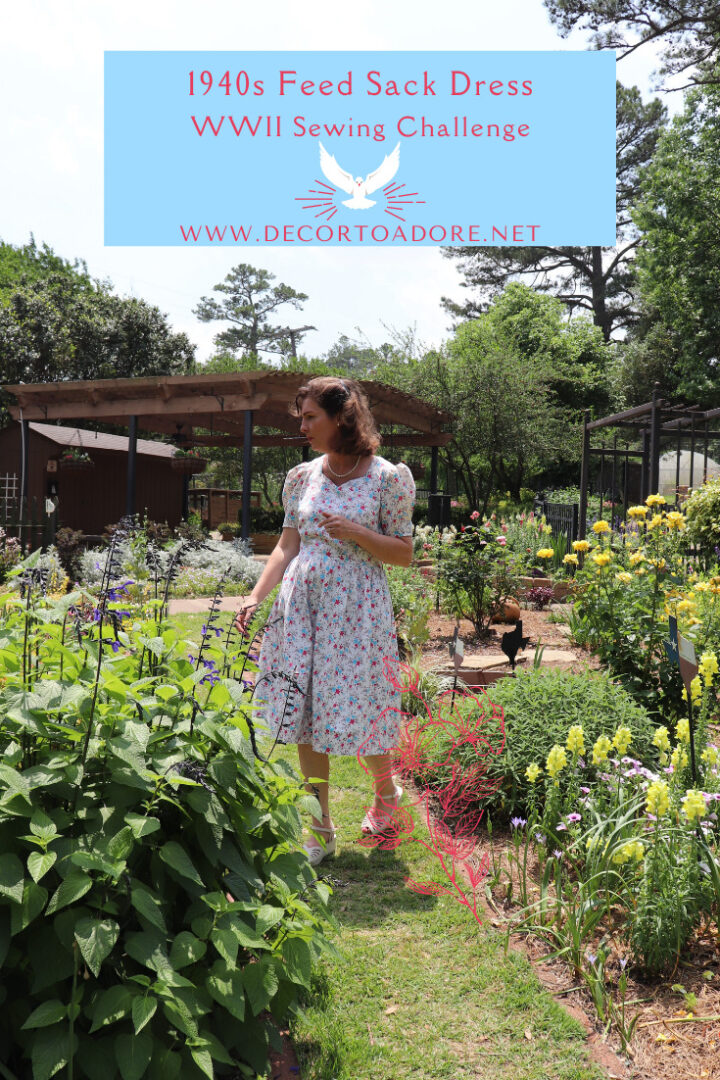
WASPs
During WWII the WASP (Women Air Force Service Pilots) were a brave and dedicated group of aviators. While they did not face combat they kept our county going by flying planes here at home. From 1942 to 1944, the WASPs ferried over 12,000 military planes, completed countless domestic missions, and flew over one million miles in service. A few of the training bases were located here in Texas.
Recently an 80th-anniversary celebration was held at the WASP WWII Museum in Sweetwater, Texas. Mr. Decor and I had planned to attend. I made us coordinating 1940s-era ensembles to wear but sadly I was felled by illness.
Elizabeth Gardner in the cockpit of a B-26 Marauder at Harlingen Army Air Field in Harlingen, Texas, 1943.

1940s Feed Sack Dress Tyler Rose Garden
Even though we didn’t attend the event I still wanted to share this dress because the fabric is fabulous! A few years ago I had found four matching vintage feed sacks at an estate sale. They have been quietly waiting for their moment ever since.
In the mid-19th century, heavy canvas or linen feed sacks replaced barrels and tins used for the storage and transport of flour, sugar, animal feed, and other products. In the late 1800s, textile mills were producing strong, inexpensive cotton. This cotton quickly replaced the canvas as the preferred material for feed sacks.
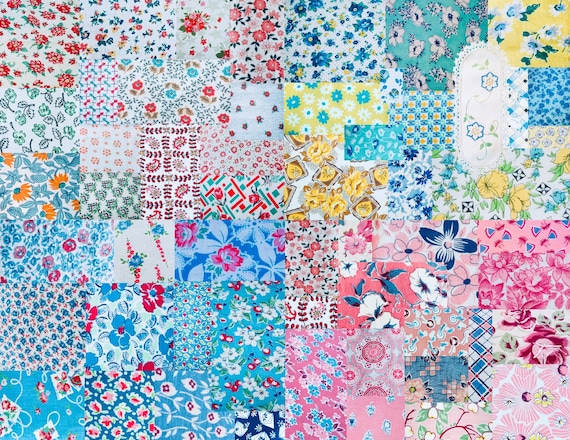
Farmer’s wives took advantage of this new source of essentially free fabric and began transforming the empty cotton sacks into blouses, skirts, dresses, and more. The feed companies saw a marketing opportunity and began to print their sacks in cheerful colored prints. As it generally took more than one bag to make a dress, farmers had an incentive to keep buying the same brands. Fabric feed sacks were made thru the early 1950s. By the 1960s most of the feed sacks were replaced with paper or plastic bags.

This vintage fabric features a cheerful red, white, and blue mid-century print perfect for a WWII celebration. Now there may be a few fashion historians cringing that I would cut into such prized fabric. But let me assure you it was far from pristine. In this week’s video, I show that the fabric had numerous holes as well as several large grease and mildew stains. It was quite the challenge to create the dress.
I left the two best feed sacks intact. They became the front and back panels of the skirt. With the gathered waistline, it is hard to see the stains and spots.
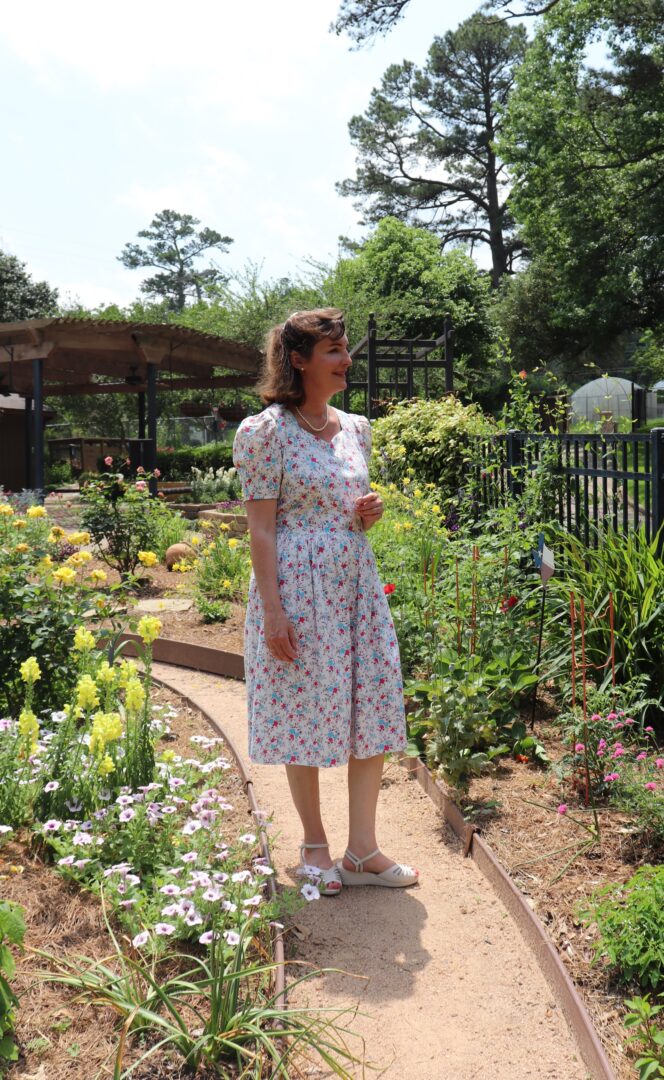
Simplicity 9464
Recently, a vintage 1940s pattern was rereleased by Simplicity. Let me just say I love this pattern and will probably make a few more cool cotton dresses to wear through the summer. With assistance, a beginner could make this dress. I made view A without the ruffle or back ties. 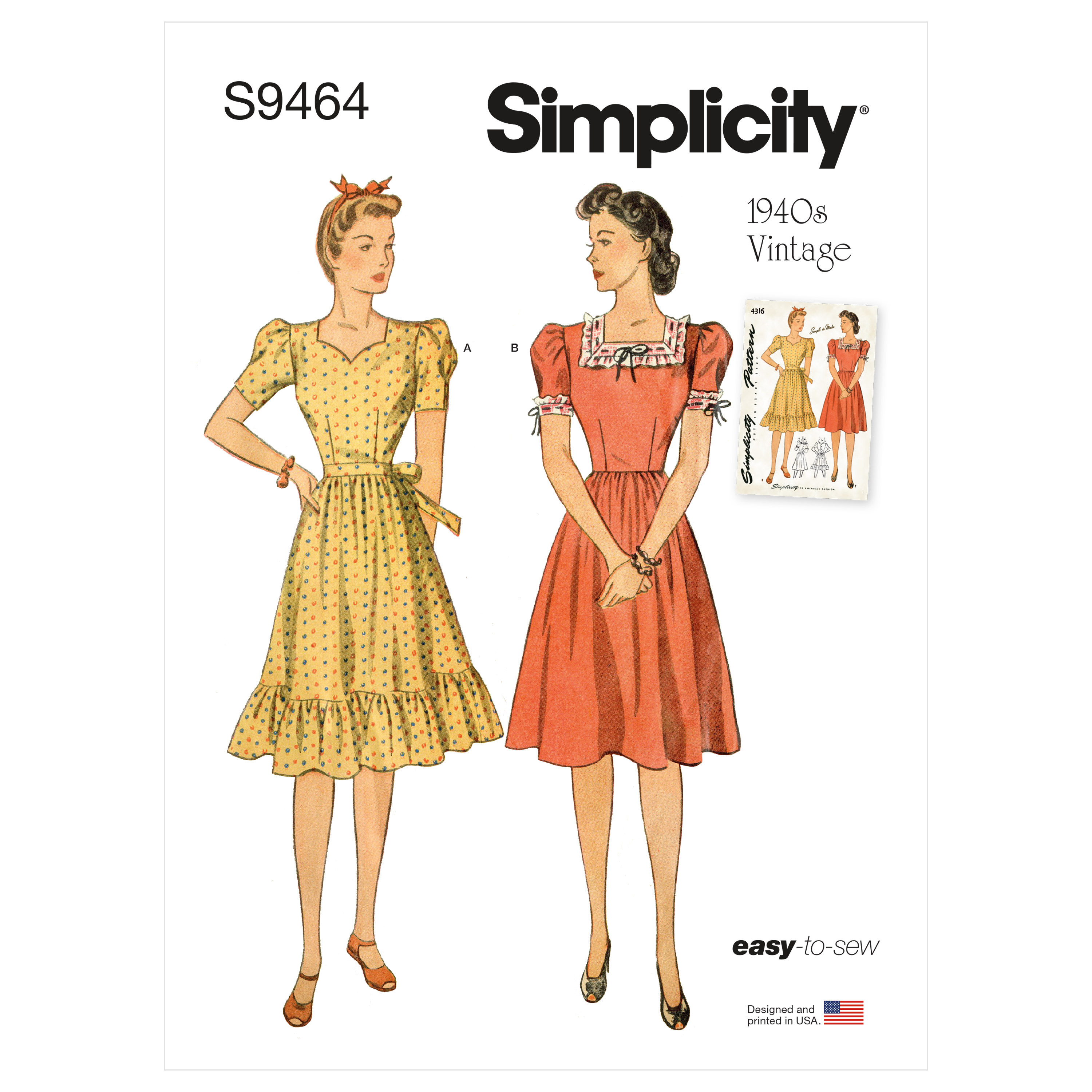
Tyler Rose Garden
When my wonderful houseguest, Tracy, and I decided to visit the Tyler Rose Garden I thought it would make a lovely backdrop to feature the dress.
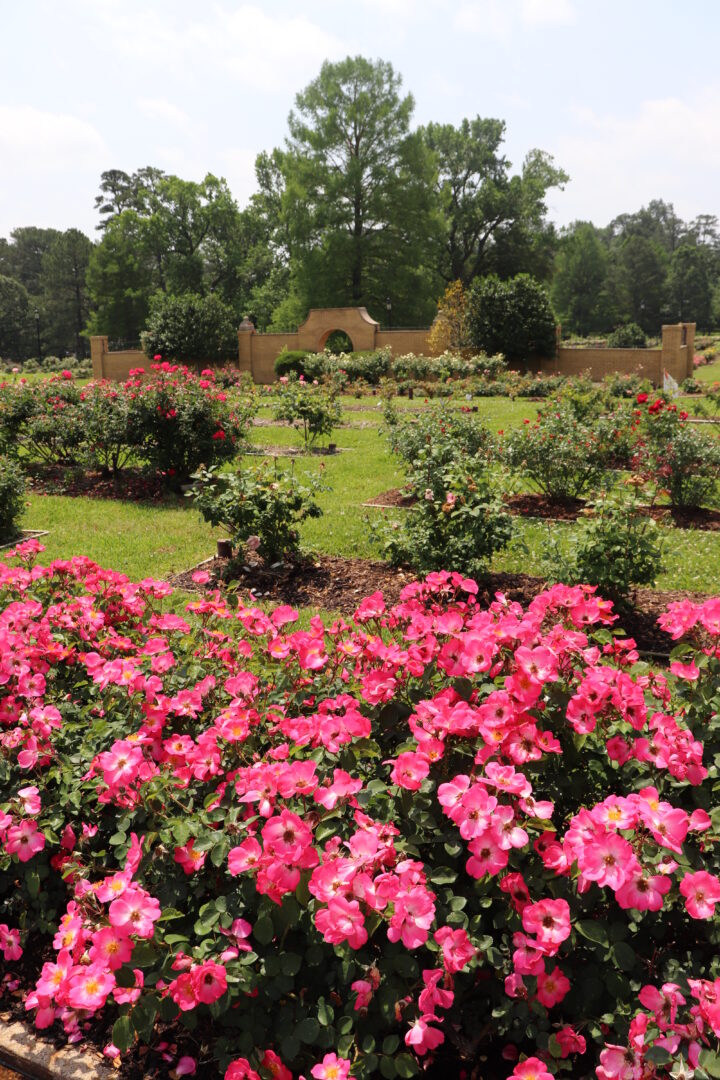
Tyler, Texas is known as the Rose Capital of America. This is due to its long history of rose production, cultivation, and processing. The 14-acre rose garden is the largest in the United States. It features 32,000 bushes and 600 varieties of roses.
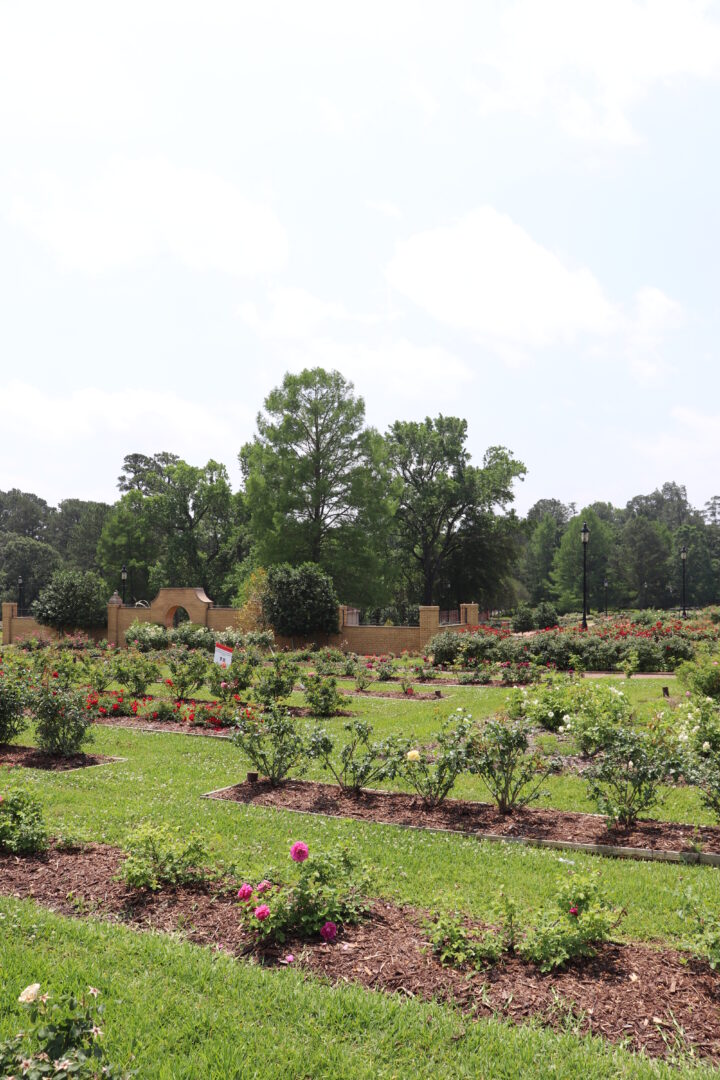
Honoring Henry Thompson
The park and garden were created in 1912. Keith Maxwell, a WPA (Works Project Administration) landscape architect, drew the initial plan for the park and rose garden. It was revised by Henry Thompson, a local nurseryman. Thompson laid out the walkways and planted trees, and shrubbery. Thompson would later be killed while serving as a fighter pilot during World War II. The garden was eventually dedicated to his memory.
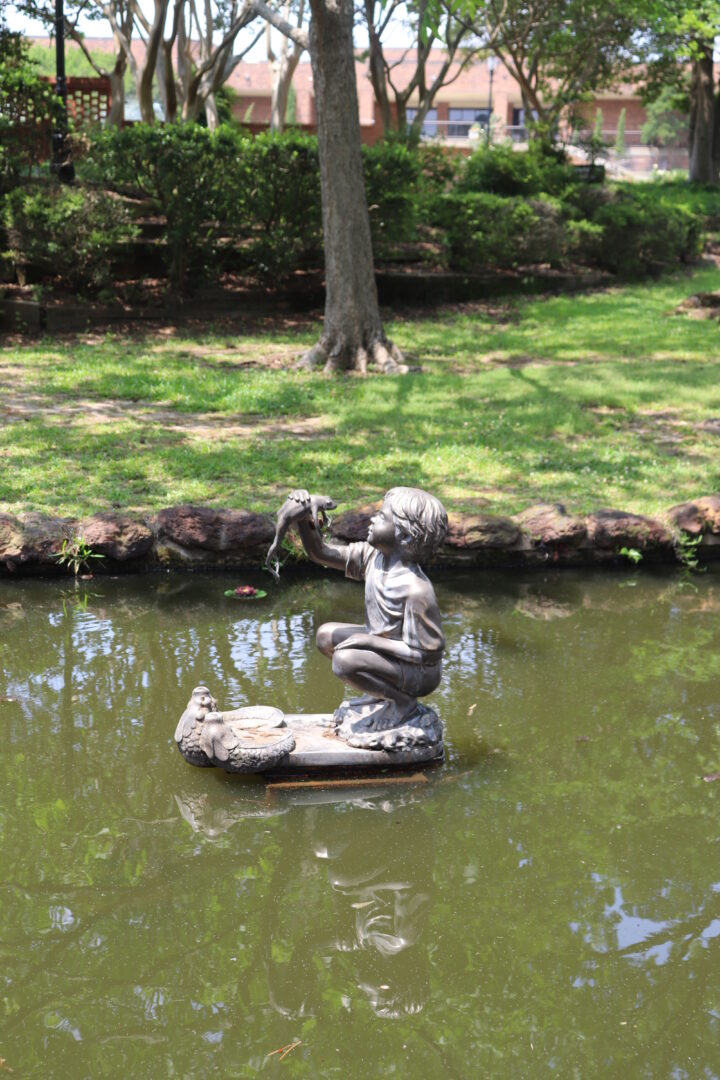
The garden is well worth a visit and is open from sunrise to sunset. It is free to tour.
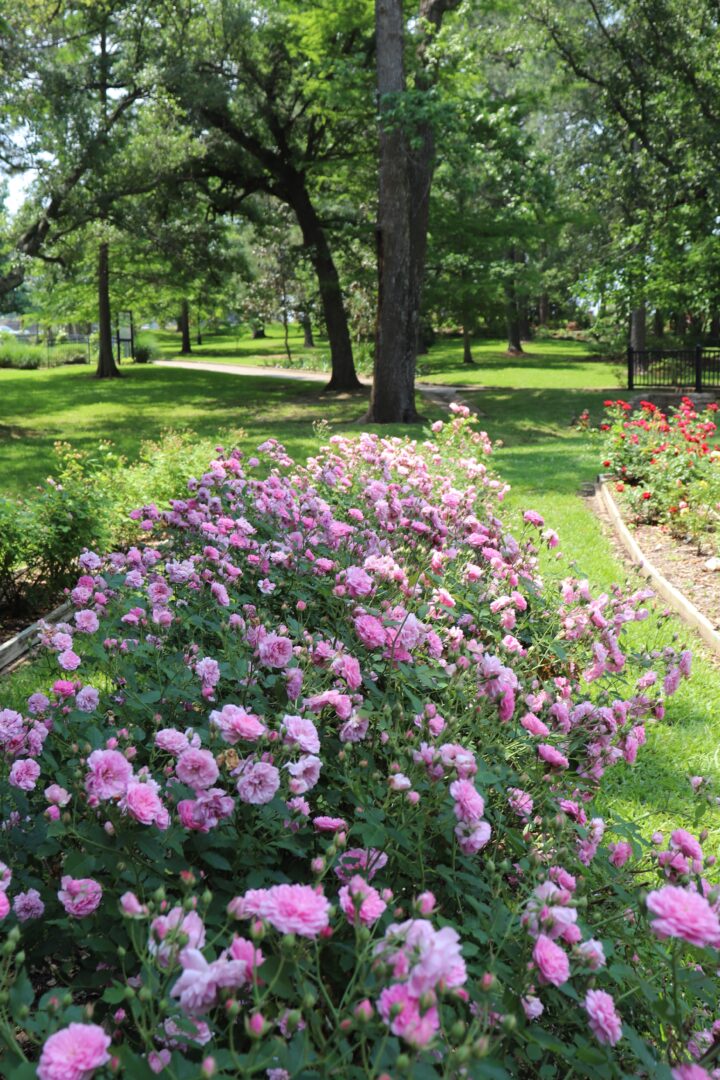
A Rose In Bloom
The roses are generally in bloom from April through October.
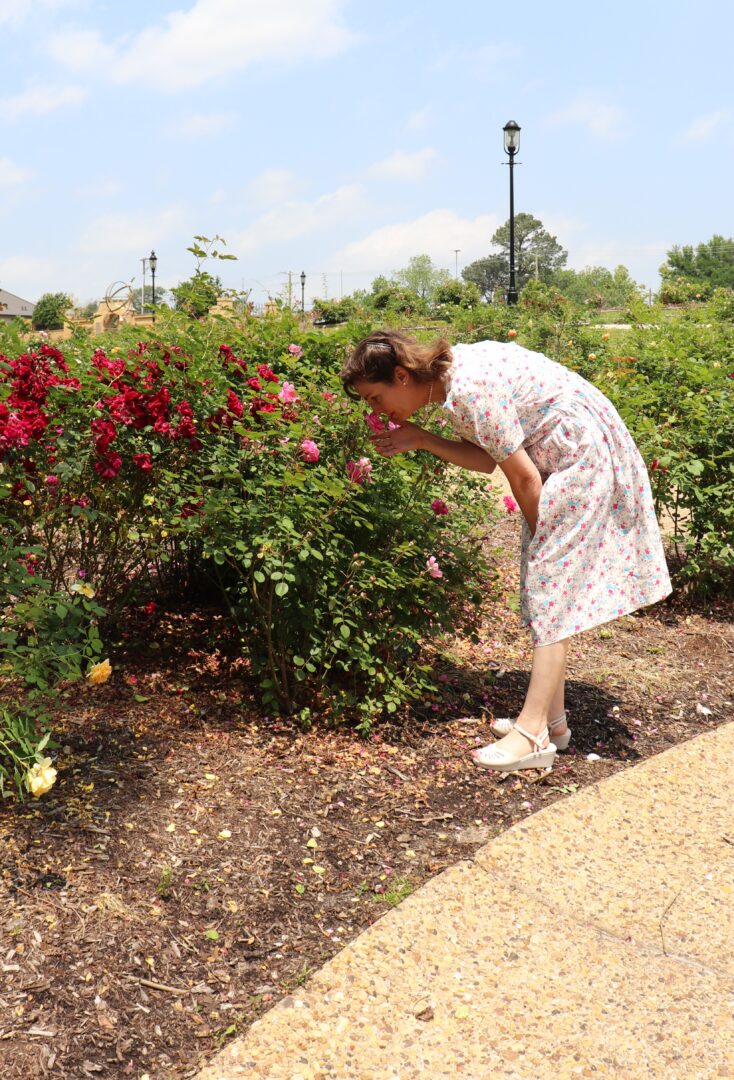
There are other mini-gardens within the park that feature flora that is native to Texas as well as species of plants that grow well in the clay soil.
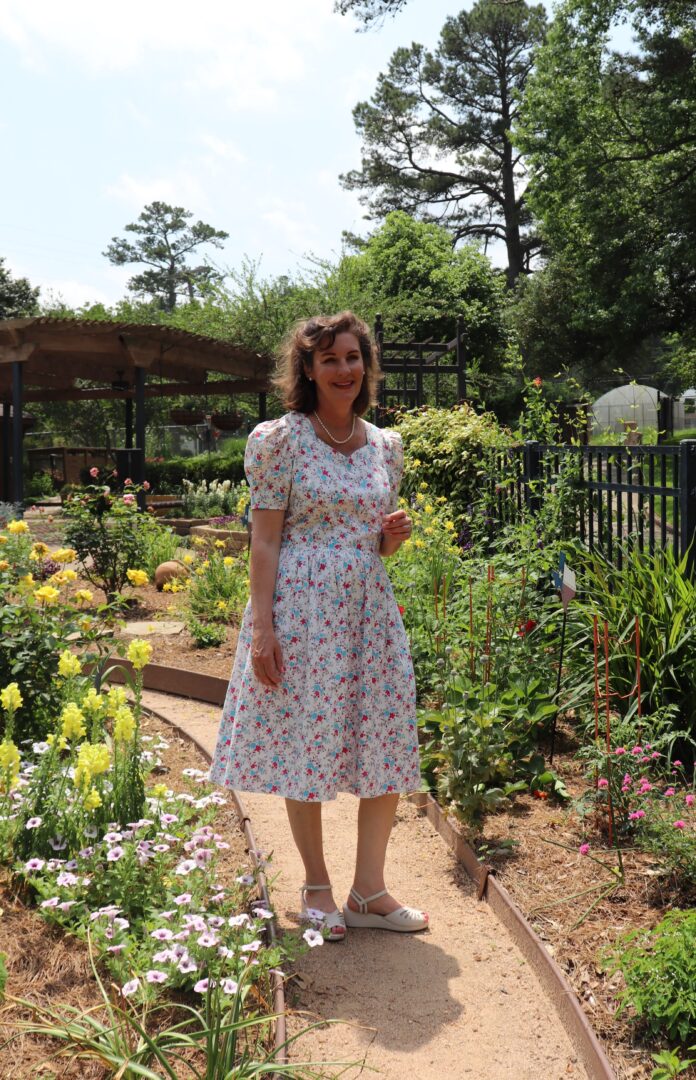
I always like to see the images in black and white. It is an easy way to envision time travel.
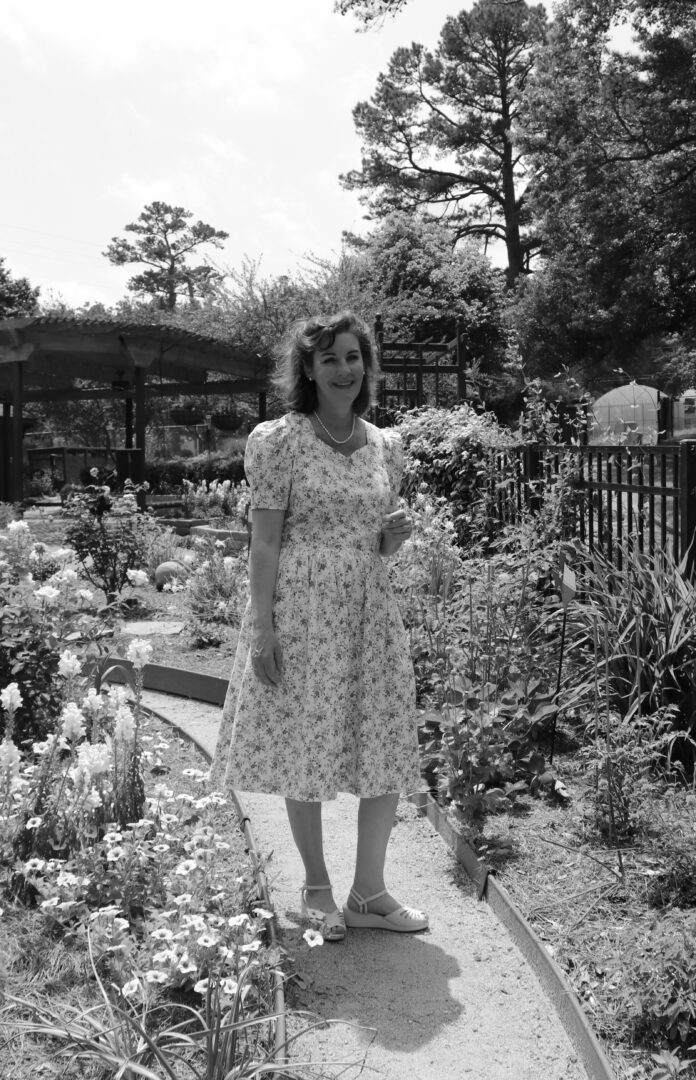
I paired the dress with my grandma Mary’s pearls and some 1940s reproduction footwear by B.A.I.T.
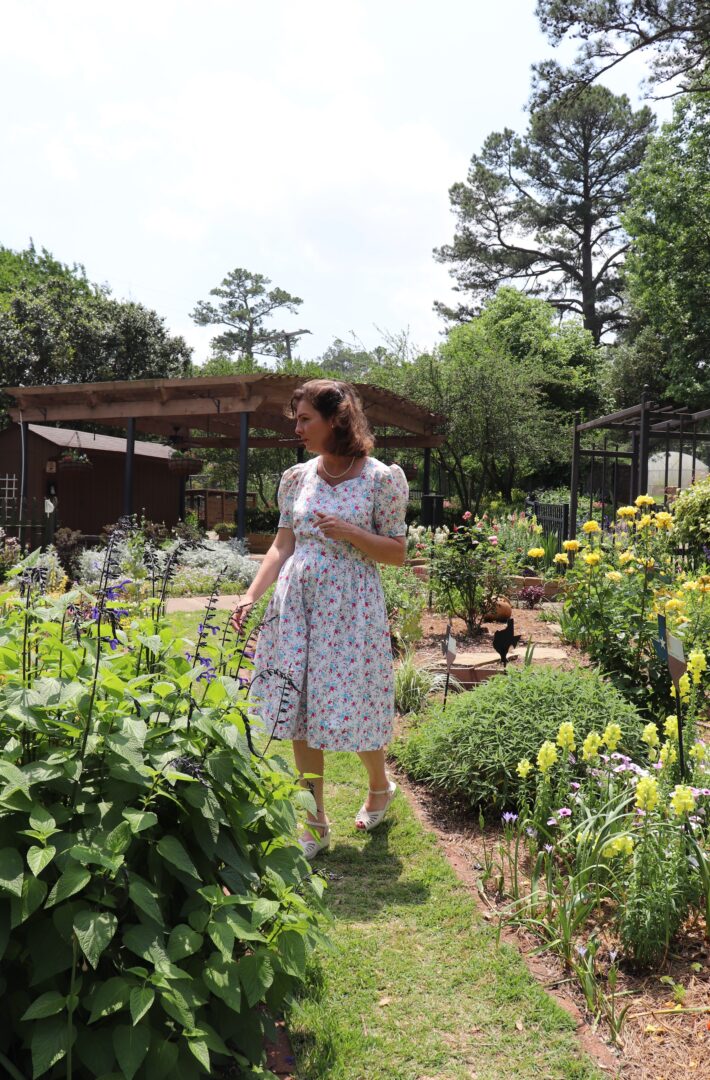
While I set my hair in a victory roll style the high humidity of the day made it quickly droop.
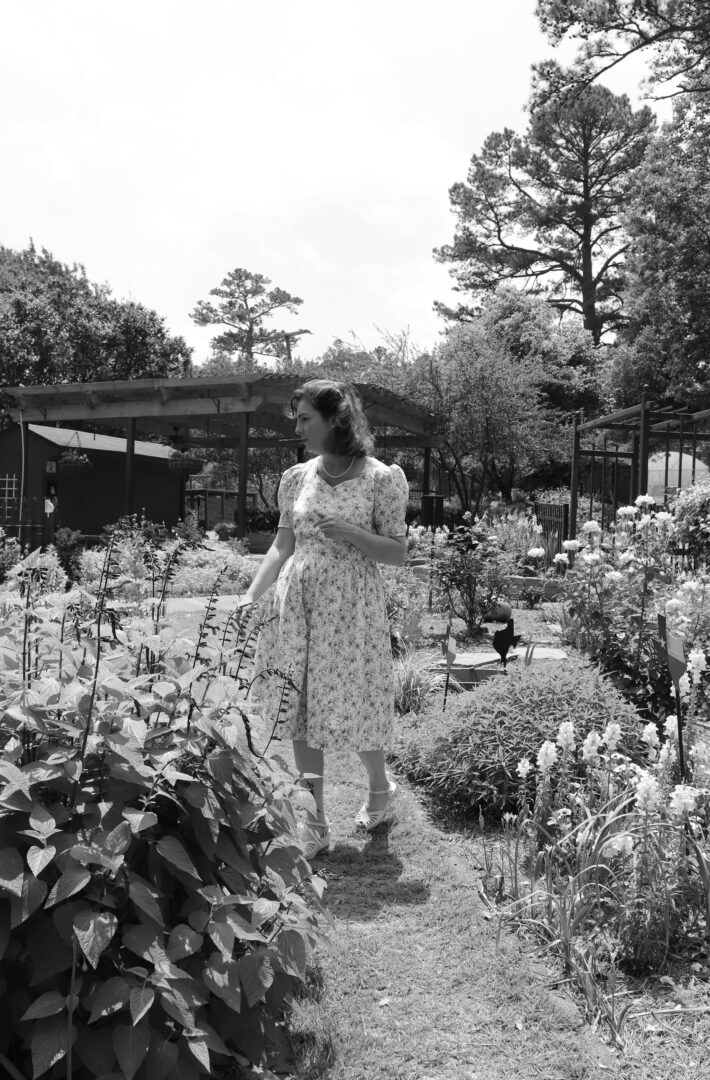
The back of the dress closes with four beautifully iridescent vintage blue glass buttons. They are more easily seen in the video.
This Week’s Video
I hope you enjoy both the gardens and the dress featured in this week’s video.
If you wish to view the video in a larger format just click on the black box in the lower left hand corner that says Watch on YouTube.
I’ll see you on Sunday.
Laura
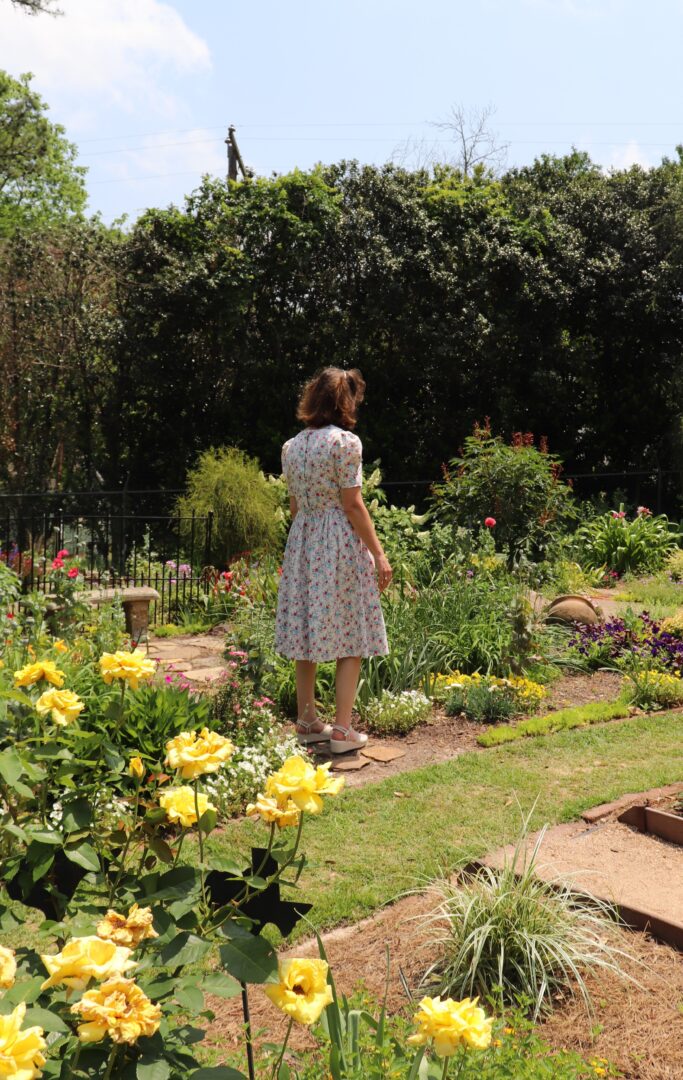
Laura, the feed sacks couldn’t have found a better project than your dress to finally make that transition from utilitarian to garment that so many did. My Mom and all her sister wore feed sack dresses. In cleaning out my aunt’s house I recently came across a newspaper article with pictures of her and some other young women wearing cotton dresses made from sacks. The black and white photo you posted made me cry because it looked so much like the photo of my aunt in her dress.. Your time travel photo worked. I went back 80 years.
And thank you for highlighting the WASPS . They were an amazing group of young women who served their country and blazed trails for other women to follow, doing things that it was thought women could not do.
Love your pretty dress! It is so perfect for the era. I remember that style of sandals on my mother and grandmothers. This looks like a pretty summery Sunday afternoon outfit for visits and picnics. How sweet to have the dainty string of pearls to set off the sweetheart neckline.
Beautiful photos. Thank you so much for sharing!